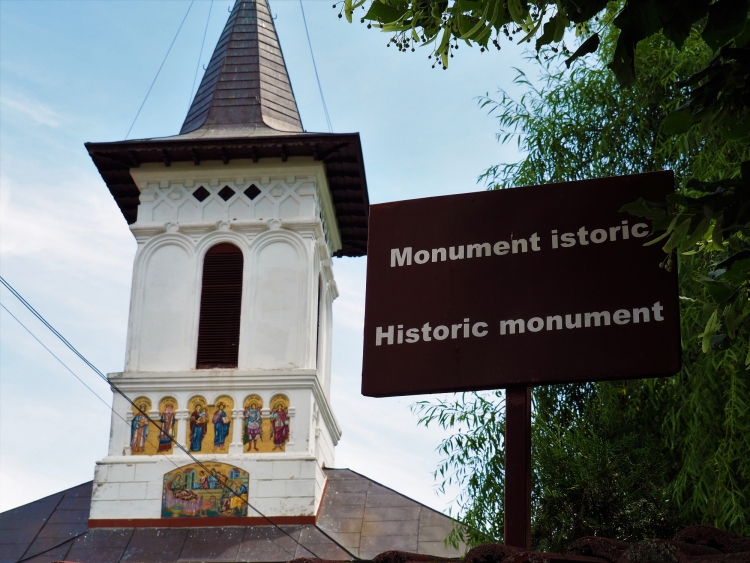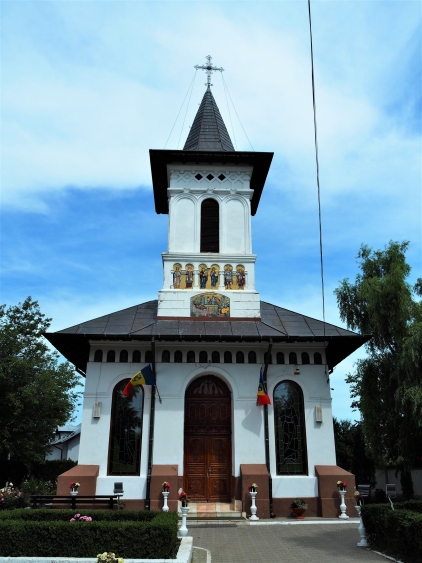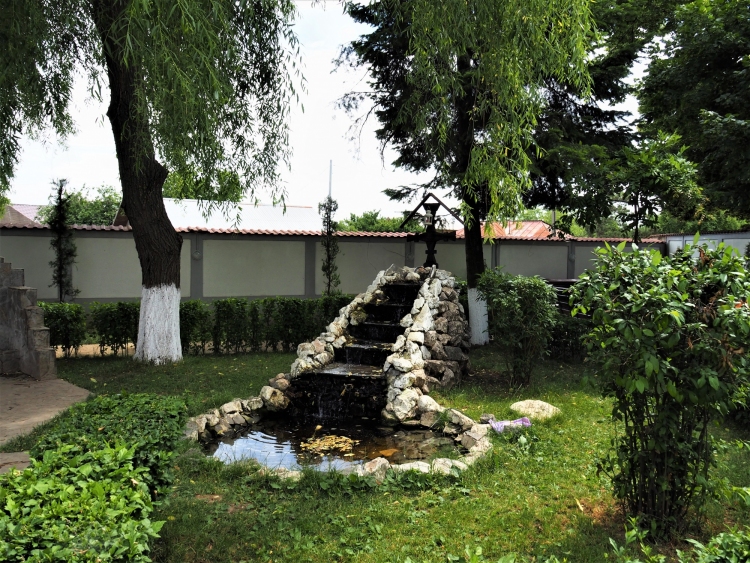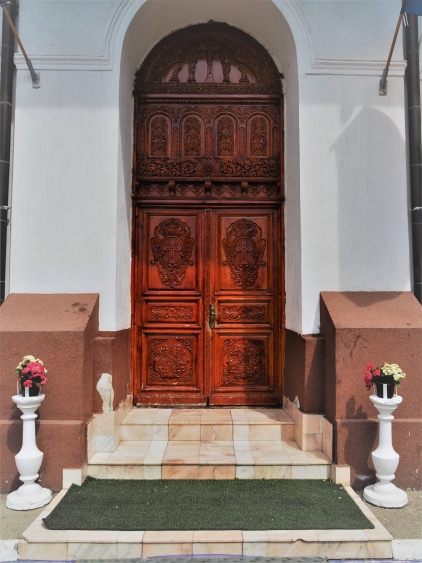Of the three churches that the commune has, two are historical monuments – the one from Letca Veche and the one from Letca Nouă. Although it has been refurbished several times, the monastery in Letca Nouă requires a new intervention. Being a historical monument, it should be restored all at once, but at present, there are not enough funds for this approach. This article aims to provide a more complex picture of the history of this monastery, closely linked, of course, to the history of the entire commune. I put together the testimonies of the spiritual priest of Letca Nouă village and of the oldest villagers and I consulted some archive documents.

The written history of Letca Nouă commune begins around 1700, when it belonged entirely to the boyar Iordahe Filipescu. This included the village of Letca Nouă, which consisted only of hamlets and huts, the forest that stretches around the commune (then called Nifon Cocoșilă, after the founder of the church), the village of Milcovățu (then called the Russians of Asan) and Letca Veche (several hamlets called Șoimani, Siliște, Bălăria and so on). All this belonged to the Letca Nouă estate.
Iordache Filipescu built a wooden church in each of his hamlets. He put priests there who were human from his own and took care of the villagers. Around 1710, in the current cemetery of the village, he founded another church, which was later set on fire. It is believed that the arson took place with the restriction of hamlets, actions designed to protect the villagers from the great threats of the weather – plague and cholera.
In 1752, he rectified the church in the cemetery, and on the entrance beam he wrote with fuel oil: “This holy church was built in 1752 by me, Iordache Filipescu”. The church lasted from 1752 to 1952/1954, about two hundred years. That is, until the beginning of the communist period.

After the boyar’s death, all this belonged to his two children. The legend of the place – it is not known if it is proven in reality – says that after the death of the boyar Filipescu, the children quarreled and divided their fortune in two, which later ended up in the hands of a German baron. There is not much information about the latter, it is not known why he came, why he left, or how the fortune of the two children ended up in his hands. We can listen to the rumors in the village, which say that they sold it, or that they lost it at gambling – it is possible, in fact, that the two had such occupations. Long after, it seems that the fortune ended up in the hands of a brother of Metropolitan Nifon. The documents say he bought it. The bad mouths claim, however, that the baron had accumulated a lot of gambling debts, so he had to give the estate to cover his debts.
The first priest and also the first parish priest of this church is Barbu Herghelie, who still has descendants who bear his name in the village. The father also serves at the church in the cemetery and in the village. An attempt was made to transform the church from the cemetery into a monastery, but it was at that time that the secularization of fortunes took place, and the church would lose land, pastures, forests and so on.

Every priest has been shepherding a lot here in the village for about decades. They came at the beginning of the priesthood and remained until the end. This is how whole generations of priests were formed. Badea Ioan Duhovnicul is the father of Father Mihalache Popescu, who, in turn, is the father of the priest buried in the courtyard – Vasile Popescu. The priest prof. Academician Dumitru Popescu, who died last year, came from Letca Nouă and was their relative. His father was a priest in Călugăreni, but he was born in Letca Nouă. He was a cousin of Vasile Popescu, a priest he is buried in, and a nephew of Father Mihalache.
On the tomb cross of Father Badea it is written:
“Born in suffering, raised in suffering, In all I triumphed, I did not escape death.”
Father Mihalache is known as the man who, in 1896, when the Milcovăț River overflowed and affected sixty households, mobilized the whole village to help those affected by the floods. In 1911, the priest’s son Mihalache, the priest Vasile Popescu, came. Between 1927 and 1929, he cleaned the church painting with the painter Apostle Stelian, repaired the church’s roof and arranged its exterior, and consecrated it in November 1929. There is also an article in a church newspaper from that time, which keeps in the archives of the Faculty of Theology, which talks about the settlement made by a metropolitan of Giurgiu origin, who was born in Naibu and who loved this area enormously.
Metropolitan Nifon gave this church two patron saints – the Holy Emperors Constantine and Helen and the Holy Hierarch Nifon, Patriarch of Constantinople. The church, also known as Nifon’s Monastery, was adorned with paintings executed by the painter Gheorghe Tăttărescu. He left in the church some important things: the unique icon of Saints Constantine and Helen (you will not find it anywhere painted in the style it exists now, at Letca Nouă) and the icon of the Mother of God, which is most likely also painted by he. The icon of the Mother of God remained in the wooden church in the cemetery until it was brought here in the early 1950s. Father Vasile pastored from 1911 to 1950. Until his death, Father Vasile managed to partially recondition the church, with the help of benefactors from the village.

In 1948, Father Florea came to this church, and in 1951 he was appointed parish priest. Father Florea has at least an interesting history. Although he came from Argeș County, before coming to the church in Letca Nouă, he chose to go to a parish in Osmancea, Constanța County. There he managed to bring the Muslim community very close to the Orthodox one. The Muslim imam even provided a Muslim nurse with priest Florea and his family to help them cope.
He managed to build, together with his parishioners, a parish house and a relatively large church with three towers. He would have remained in his parish, but in 1940 he was called as a garrison priest in Făgăraș. After returning from the front, he was decorated, and in 1946 he was offered to resign from the priesthood and be promoted. It is rumored that he was even offered a job as a minister. But he refused, so he was described as hostile to the socialist regime.
After a year in which he taught French and geography at the theological seminary at Curtea de Argeș, Father Florea stabilized as a priest in Letca Nouă. This happened in 1948, and he was to help priest Vasile until 1950. In 1951, priest Florea was appointed parish priest and received another minister priest, Ștefan Coteanu. Together with Ștefan Coteanu, he repaired the church and its roof, and Gheorghe Vânătoru and Nicolae Stoica took care of the restoration of the painting, the latter being a painter quite famous for restoring the paintings of churches in Giurgiu, including the Episcopal Cathedral and St. Nicholas Hermitage.
The most notable effort of Father Florea materialized, most probably, in bringing to the place where it is still today, the old wooden church in the cemetery. Or, rather, what was left of it after the fire that had affected it during the First World War. Among those brought from the cemetery was the icon of the Mother of God – the one that currently springs myrrh.
One of the village elders says that one of the Sundays, Father Florea saw that water was infiltrating through the painting, thus appearing a lake around the icon. Other elders have not been able to confirm the story, so there is currently a doubt about this event.
Father Ștefan Coteanu pastored from 1951 to March 1958. He had connections with the Europa Libera radio station, permanently sending letters which were later, following a search, destroyed on the spot. This story is also known from the village elders. He was often pursued, investigated and even beaten by people from the village who were members of the party. In March 1958 he was arrested, convicted and sent to Gherla Penitentiary, where he remained until 1959 when he died.
With the arrest of Father Stefan, Father Florea remained alone until 1988. His pastorate lasted about forty years – and in case you are surprised by the long period, find out that there is another, also in the village of Letca Nouă, forty-six year old. Although it took place forever kept in the churchyard, the last wish of priest Florea was to be buried in the village cemetery: “I grazed, in the midst of them to bury me.”
After Father Florea, they came to serve Father Gheorghe Ion and then Father Florin Dobre, who now serves at Bărbătescu Vechi, a small church in Bucharest. After these two, followed the service of Father Edmond Nicolae Popa, who is responsible for almost everything that can be seen today inside and outside the monastery. When the father came, the church was in a rather bad state, the painting being cracked, sometimes completely destroyed. The crosses on the church were eaten by rust, the stained glass windows did not exist, and there was no marble on the floor. The courtyard did not look too good either, and the place where the parish house now stands was then used as a landfill.
Between 2007 and 2009, Father Edmond built a social center for orphans, thus founding the Letca Nouă Association. The social center was abolished in 2015 when the church received the status of a monastery – hermitage of nuns, more precisely, which has so far been headed by Mother Irina Vasilovschi.